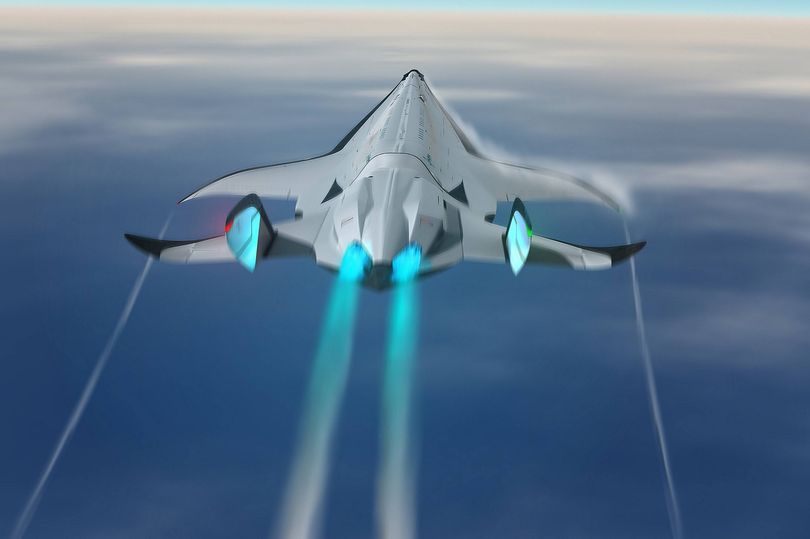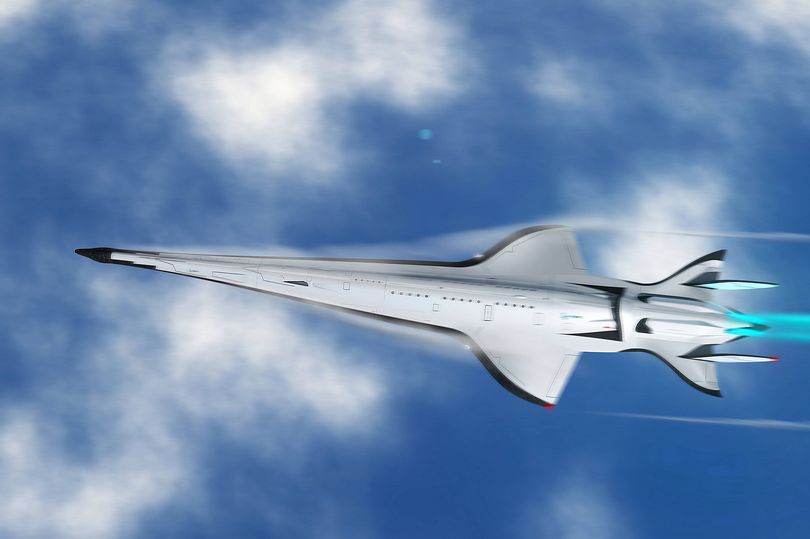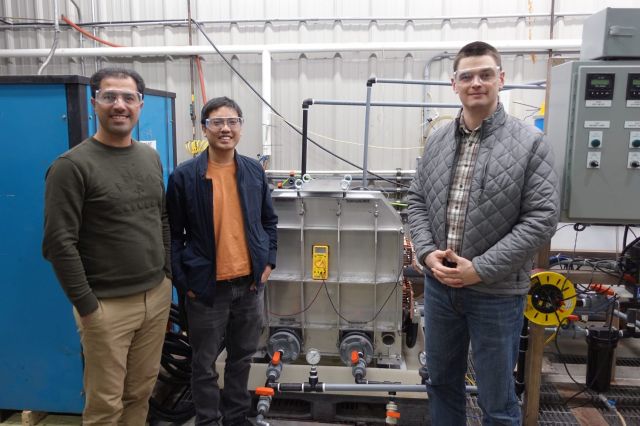‘New Concorde’ will cut US to UK flight time to 45 minutes and travel seven times faster than speed of sound
A revolutionary hypersonic airliner, the A-HyM Hypersonic Air Master,
could slash London-New York flight times
to a mere 45 minutes.
This groundbreaking aircraft is set to revolutionize air travel by flying at Mach 7.3-over 5,600 mph. Designed to carry 170 passengers, it
could reduce the transatlantic journey from the usual seven hours
, making transatlantic travel quicker than ever before.
In comparison, Concorde typically
flew from London to New York
in just under three and a half hours, compared to about eight hours on a subsonic flight.
Spanish designer Oscar Viñals says the A-HyM would cruise at an altitude of 30,000 meters, far above conventional jets, using advanced heat-resistant materials like titanium and carbon fiber to withstand temperatures up to 1,832°F, reports
the Mirror
.
READ MORE:
TSA issues urgent warning for travelers using cellphones at the airport
READ MORE:
Runway reopens two weeks early but travel chaos and delays at Newark airport drag on
Its innovative Sonic Boom Mitigation System aims to reduce the disruptive noise of breaking the sound barrier, potentially allowing supersonic and even
hypersonic flights
over land without disturbing communities below.

Powered by a next-generation hydrogen-fueled combined-cycle engine, the
aircraft would blend turbojet, ramjet, and oblique detonation technologies
for both speed and eco-friendliness.
Inside, passengers would enjoy spacious, comfortable cabins equipped with virtual panoramic windows and advanced entertainment systems designed to handle the unique conditions of hypersonic flight.
The A-HyM, a concept aircraft, is showcasing how advancements in materials science, propulsion systems, and aerodynamics are making ultra-fast and sustainable global travel more feasible than ever.
Oscar Viñals, the visionary behind the project, said: “This aircraft concept would allow its users not only to experience a unique flight at dizzying speeds in excellent conditions, but it would also allow them to “master” time, because a trip, for example, from
London
to Los Angeles would only take an hour and a half, from boarding at Heathrow international airport to disembarking at
LAX
(Los Angeles International Airport).”
But the team behind the A-HyM isn’t alone in chasing the dream
of commercial supersonic flight
. In January, the Boom supersonic jet – often referred to as the ‘new Concorde’ – officially broke the sound barrier.

Boom, a Colorado-based company, launched its XB-1 test plane from California’s Mojave Air and Space Port for a test flight in January. The plane reached a speed of Mach 1.1, or 844 miles per hour, while flying at about 35,000 feet.
A
plane
is considered ‘supersonic’ once it surpasses Mach 1. The Boom XB-1 is the first civil supersonic jet made in the US to break the sound barrier.
The challenge of breaking through the sound barrier, and the loud bang that occurs when planes do, is part of why super-fast air travel has been difficult to achieve from a business perspective.
As stunning and iconic as the Concorde’s curved delta wing shape was, it had a fundamental flaw that led to its eventual retirement. Breaking the sound barrier creates a massive sonic boom that can wreak havoc on the ground below.
During a 1965 test over Oklahoma City by the US Air Force, hundreds of reports of shattered windows were filed.
This potential for disruption meant that the
Concorde could only fly certain routes at supersonic speeds
, prohibiting high-speed flights over land. This limitation severely impacted the aircraft’s business case in the US, as it couldn’t effectively connect major cities like Los Angeles and New York.
Click
here
to follow the Mirror US on Google News to stay up to date with all the latest news, sport and entertainment stories.
Climate scientists
also raised concerns about the Concorde’s impact on the ozone layer, specifically the potentially harmful effects of its emissions while flying at 60,000 feet – a necessary altitude for the plane to reach air thin enough.
The relatively small passenger capacity combined with the large amount of fuel needed for such high-speed travel meant that fluctuations in oil prices hit the airline hard. At times, customers were shelling out nearly $12,000 for a single trip back in 2003.
Operators Air France and
British Airways
even had to have backup planes made, further adding to the mounting costs.






